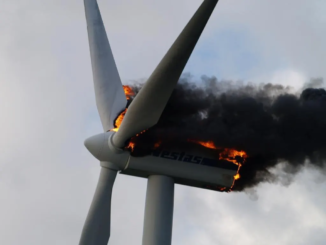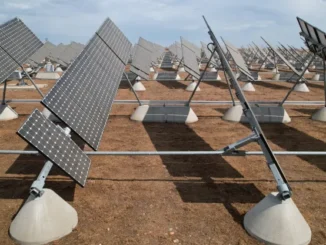
Americans have been plagued by high gas prices in recent months, with recent polls showing fuel costs at the top of the list of economic concerns, right below the related issues of inflation and the state of the economy in general. Spiking gas prices have outstripped the rate of inflation and even increases in crude oil prices, so it’s not just a matter of rising commodity prices overall. There are many influences, of course—sanctions on Russia, the pandemic shutting down refineries and disrupting supply chains, and an increase of demand for gas as people return to their regular lives. But the missing factor is climate policy targeted at the oil and gas industry.
At the 2021 United Nations COP 26 climate conference in Glasgow, many large international financial institutions, including JPMorgan, Citigroup, Deutsche Bank, and Bank of America, pledged to cut emissions to zero by 2050. They intend to stop investing in oil and gas production in an attempt to lower their carbon footprint.
Corporations across America are also buying the Biden administration’s rhetoric on oil and gas divestment. The administration released a document in April 2021 stating its goal as “Mobilizing financing to drive the net-zero transition and adapt to climate change” in order to “promote the flow of capital toward climate-aligned investments and away from high-carbon investments.”
Choking off capital to the oil and gas sector is a perfect recipe for shrinking supply and increasing prices. It’s no wonder that these banks have been quiet lately about their divestment pledges.
While many Americans are interested in what they’ve been told will be “greener” energy options, their potential long-term benefits are coming at the cost of working-class wallets. Now that this tradeoff is becoming more apparent, Americans will likely reconsider if that is really what they want. Environmental activists have a long history of neglecting cost-benefit analysis, especially when the negative impact of their preferred policies lands on the least fortunate in society—households for which energy costs already constitute a disproportionate share of their budget.
Despite claims on that left that banks are only masquerading as environmentally friendly investors, it is clear that they are feeling the pressure to alter their investment strategies. According to Goldman Sachs analyst Michele Della Vigna, the expected return on a new oil and gas project needs to be 20 percent in order to attract financing, compared to 3 to 5 percent for renewable energy projects. Oil and gas companies, now unable to properly secure investors, are having difficulty opening new facilities. Less and older infrastructure leads to higher costs for consumers.
Why is the cost of capital so high? Most major finance firms and banks now include environmental, social, and governance (ESG) factors when considering whether to invest. Under an ESG framework, companies are supposed to look at more than their bottom line when investing, while considering how effectively they are advancing a—frequently left-leaning—ideological agenda. Blackrock, the world’s leading asset management company, proclaims: “ESG risk analysis is now embedded in 100% of regular portfolio risk reviews. Sustainability-related risks are considered in the same structured investment risk management process as traditional risks like credit or liquidity risk.”
Despite current high prices for oil and petroleum products, refineries in the U.S. are closing rather than expanding. Dutch petrochemical multinational LyondellBassell, for example, recently announced plans to shut down a major refining plant in Houston. That facility currently produces over 250,000 barrels of oil per day, but will be closing by 2023, long before the end of its useful lifetime. In just the past two years, five U.S. refineries have shut down, decreasing the United States’ total refining capacity by 5 percent. In a normal market, producers would rush to expand capacity, put political signals coming from Washington, D.C. are scaring them off.
The Biden administration is trying to have it both ways—pushing an ESG agenda that calls for permanently phasing out fossil fuels while demanding that oil and gas companies ramp up production to lower prices in the short term. The White House released a statement to this effect in June, saying “the President understands that our efforts to increase energy production in the near-term must be coupled with medium- and long-term efforts to transition our economy away from fossil fuels.” But if oil and gas companies are being told that they will not be around in 20 years’ time, major investments in expanding production will be a hard sell.
This conflict is also not helped by the suggestion by some Democrats in Congress to subject energy companies to a windfall profits tax. That will be ineffective at lowering costs and will likely make the supply problem worse. The United Kingdom recently imposed such a tax, even as economists have warned that such a policy will discourage investment and reduce output. That may be what some environmentalists are hoping for, but average Americans will be footing the bill.
Source: Cei.org



